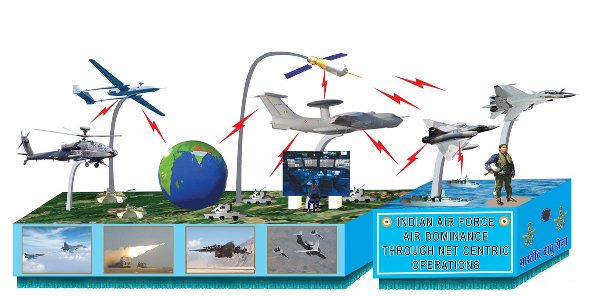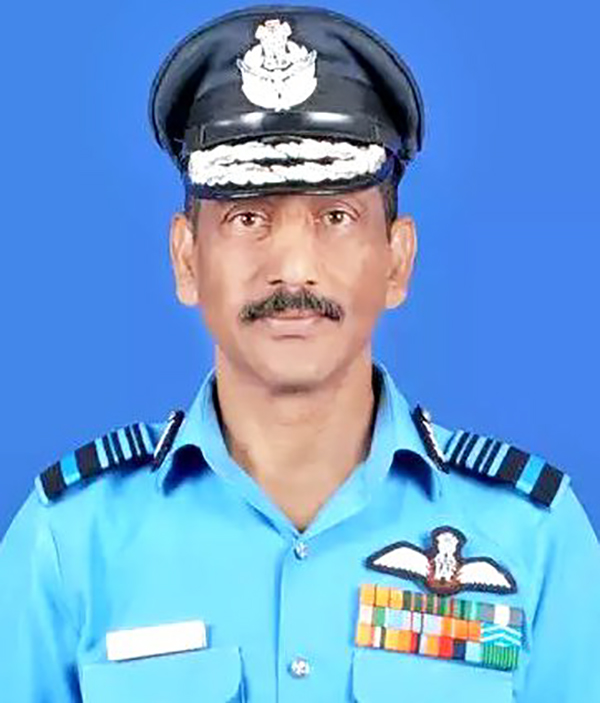Based on the Introductory Remarks made at Digitisation & Networking in the Armed Forces 2020 Webinar, 21 Nov 2020.
The Indian Air Force has been part of the AFNET network for quite some time. Both the Air Force and Navy have been implementing network-centric operations for some time and we have gained a lot of experience in such operations. Two things generally come to our mind. Network Centric Warfare (NCW) is totally a different ball game.
It is actually a totally new domain in terms of transformation. Is it just technology or is it a problem solver? I think we need to understand that better. It is not a new military technology but a new way of thinking, organizing and fighting wars.
ALSO READ: DIGITAL TRANSFORMATION – Transformation For Future War
NCW is an all-encompassing technology, doctrine and organization to radically change the style of warfare. What it gives us is speed of command, self-synchronization and the concept of shooters replacing much of existing lexicon. In the age of military transformation, the NCW concept has established a framework to facilitate an evolutionary cultural change, process and doctrine for warfare. It takes a holistic approach for warfighting, based on tenets of warfare, and capitalizes on the technical advances with distributed computing and networks. NCW makes a fundamental shift from the independent entities or platforms to systems approach where the actions of one component effect the whole system. NCW does not remove the fog or friction of war, but reduces them integrating all the moving parts into a more robust and effective fighting team. Weapon platforms will be an integral part of the whole because some or all platforms will produce a greater effect than the independent platforms. According to Metcalf’s Law, the value of a network increases exponentially as a number of users increase while networking.
Shift in Warfare
The information technologies available today brings the multiplying factor of Metcalf’s Law applied to war fighting to the NCW concept. A number of shits are taking place in warfare, namely:
” From platform-centric to network-centric.
” From independent sensors to integrated sensors.
• From need-based information to common information grid.
• From centralized operations to distributed operations.
Network-centric Operations
To illustrate what we understand by net NCW and how we implement it – we have a ground network which is well established; there are various communications and radar sensors hooked up together in a network; we have satellites, which link up giving us communication redundancy and now we have aircraft flying which talk to each other. If we have two packages flying, they talk to each other. Then we have the AWACS in the air, which talks to aircrafts, to the packages and to the ground network. Over that we have the ability of any aircraft in the mission talking to any other aircraft in other missions. This gives you an overall advantage of talking to each other.
ALSO READ: DIGITAL TRANSFORMATION – Imperatives For Network-centric Operations
This provides improved situational awareness and it helps in carrying out silent intercept when I do not have to transcript from my own radar. I can transmit from the radar of a different aircraft or from a radar on the ground. It helps build a real time electronic orbat. Navigation gets better, in that, the aircraft can find new routes through safe corridors. We can transmit and transfer images in real time and seek instructions to engage the target. In a dense aircraft environment, with a small operational space, the data network provides collision warnings. We are able to carry out dynamic target allocation in the air and on the ground, thus enhancing operational capability. We are able to coordinate the air effort to ensure attacks are well coordinated and effective.
In effect NCW has provided us accelerated information flow, enhanced battlefield transparency and seamless communication with voice and data. Finally, what it leads to is reduced time from sensor to shooter.
All this impacts organisational change. In the legacy systems we had voice and data systems in different silos. NCW has transformed the environment to an enterprise network with an integrated command and control structure with a satcom network included. All of this can be scaled up to provide better data-link connectivity and communications.
Network Management
For the IAF considerable transformation has occurred. We have an Information Highway which has the network. To manage the network there is a data centre management unit. The networks are vulnerable; they need to have network security management which is provided by the SOC. To be able to communicate with remote areas where fibre optic network does not reach, a mobile network has been deployed which itself is managed by a mobile network management centre (MNMC). Satellite communication are in turn managed by a static Satellite Network Management Centre (SNMC).
The major change that has happened in the organisation is that we are able to connect with entities at various locations with redundancies, which the legacy systems did not provide. Therefore, the old traditional centralised hierarchical structures that were suitable for relatively stable and predictable conditions has been replaced by more flexible and flatter structures that will facilitate devolution of command.
The work force requirements basically entail recruitment policies, which need to be developed to draw expertise from a range of people, proficiencies and skills need to be created at various levels, For the special skills and the competencies required, special training centres are set up to be able to understand networks and managing them. The entire organization has got revamped. Is it static, No. As we keep evolving this network and the organization management keeps evolving side by side. Just as management of the organization is updated in terms of network management, we also have to look at the operational organizations.
The traditional legacy organization has three operational levels – tactical, operational; and strategic – the last being the highest. There are no overlaps. Command and control flows from top to bottom and feedback goes from bottom to top. Today, functional requirements dictate increased situational awareness, optimization of information flow, decentralization of planning, control and execution functions. In the new organization structure, we have overlaps in the tactical, operational and strategic levels. The information from the grid is available to all simultaneously – at the higher direction level to the execution level. Planning and control is decentralized. Many functions happen at the same time. Execution is much faster.
NCO facilitates flattening of the command & control structure; we need to adapt to this structure. The availability of information and data facilitates flexibility in the execution of tasks. Commanders can exercise seamless and dynamic control in rapidly changing situations. These changes allow us to seize emerging opportunities in operations due to the availability of networks.
In the end, I would say that NCW concept capitalizes on the advances of information technology; it will continue to evolve. One of the greatest challenges of NCW is the cultural change required to implement the new organizational processes and exploit the advantages provided by the concept. Speed of command and self-synchronization with the new concepts must be accepted and implemented on a larger scale within our organizations. NCW is a constructive facilitator. It requires change in the organizations and mindset of individuals within the organizations. Essentially, NCW remains a command and control concept. In addition, it directly contributes towards increasing combat effectiveness, providing efficient interfaces among sensors, shooters and the decision makers. It also opens up feasibility of implementing flattened organization structures and peer-to-peer command and control protocols, which would make military organizations more effective in the battlefield as well as more agile in dealing with the complexities of hybrid warfare in the 21st Century battlespace.



















